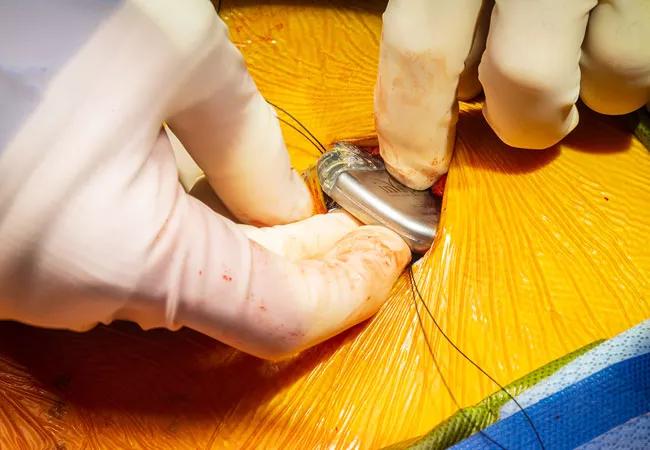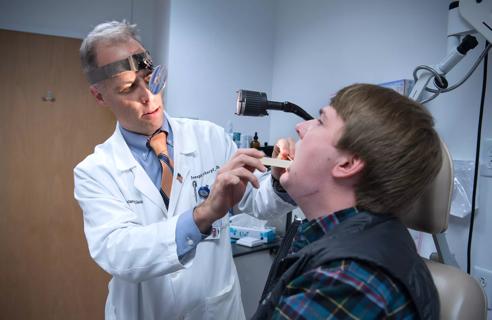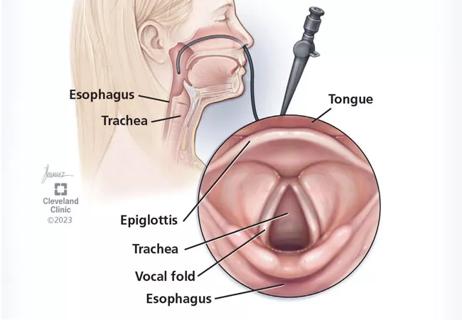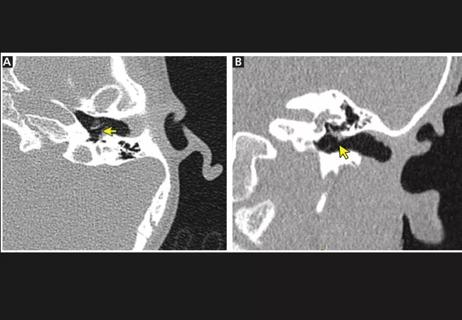Advertisement
New findings suggest that the therapy is associated with sustained improvements regarding insomnia, depression and quality of life

A new study indicates that hypoglossal nerve stimulation (HNS) can be considered as an alternative to positive airway pressure (PAP) for patients with obstructive sleep apnea (OSA). OSA, a highly prevalent sleep disorder, often coexists with other sleep and psychological disorders, such as insomnia and depression.
Advertisement
Cleveland Clinic is a non-profit academic medical center. Advertising on our site helps support our mission. We do not endorse non-Cleveland Clinic products or services. Policy
While PAP is the standard treatment for OSA, patient adherence to the treatment, both in terms of frequency and duration of use, remains an issue. The US Food and Drug Administration has approved HNS for patients with moderate to severe OSA, and patient-reported outcomes (PROs) have been positive towards the device. The retrospective cohort study, which appeared in JAMA Otolaryngology – Head and Neck Surgery, compared the respective associations of HNS and PAP with improved PROs. It also looked at whether using HNS can improve in patient-reported sleepiness, insomnia and depression in the long term.
“We believe this is the first study to compare PROs bethween HNS and PAP therapies for OSA,” says Alan Kominsky, MD, a head and neck surgeon and sleep specialist in Cleveland Clinic’s Head & Neck Institute and one of the study’s authors. “PAP therapies are very effective at treating OSA, but patients often have trouble with them. We hear complaints about the facial interface discomfort, claustrophobia, inability to sleep through the night, and pressure intolerance. So while the treatment itself is effective, we question how effective is it really if patients aren’t using it properly? This is where HNS comes in. We wanted to find out if HNS is better tolerated by patients and if the effectiveness of the therapy is on par with PAP.”
Advertisement
The authors collected data from patients who were treated for OSA at Cleveland Clinic. Participants received either HNS between November 2015 and September 2018 or PAP between January 2010 and December 2014. Patients were matched based on demographics at a 3:1 ratio for PAP:HNS. Among the data collected were the AHI and Epworth Sleepiness Scale (ESS), Functional Outcomes of Sleep Questionnaire (FOSQ), Insomnia Severity Index (ISI), and Patient Health Questionnaire-9 (PHQ-9; depression) scores. For the ESS, ISI and PHQ-9, lower scores indicated no or minimal symptoms. A score of 18 is considered normal on the FOSQ. A two point change on both the ESS and FOSQ indicates a clinically meaningful change. For the PHQ-9, five points is clinical significant, and six points is significant for the ISI.
Of the 85 participants in the HNS group, the majority consisted of older, overweight, white men with severe OSA. The 217participants in the PAP group were of a similar makeup, but there was more racial diversity. Significant improvements were seen in PHQ-9 scores for HNS vs PAP, and the authors observed comparable improvements in ESS, FOSQ and ISI scores as well. The authors also observed clinically meaningful differences in ESS scores for 64.6% of HNS group patients vs 54.5% of PAP group patients, in FOSQ scores for 59.2% of HNS group patients vs 30.9% of PAP group patients, in PHQ-9 scores for 29.2% of HNS group patients vs 24.4% of PAP group patients and in ISI scores for 46.9% of HNS group patients vs 36.4% of PAP group patients. After one month, all PROs improved significantly, and these improvements were maintained at the three-month post-HNS assessment. Furthermore, the authors did not observe any significant correlations between apnea hypopnea index (AHI) change and any polysomnographic measure or PROs. Since the greatest changes in outcomes were observed during the first month, the authors believe there is not a significant confounding association between OSA severity and changes in PROs after HNS.
Advertisement
“HNS is a relatively new therapy, and much of the existing literature focuses on its effectiveness in treating OSA,” says Dr. Kominsky. “However, because of OSA’s relationship to insomnia, depression and other psychological disorders, we wanted to learn more about the association between HNS and clinically meaningful improvement in these areas. The participants in this study saw improvements in these symptoms, and we expect that patients treated with HNS will see improvements in OSA, insomnia and depression within a month and sustained improvements over time.”
Dr. Kominsky notes that the study did have a few limitations. HNS devices may need to be adjusted after the initial activation visit, and the study did not account for this. The study also did not account for prior diagnoses of comorbid conditions, concomitant medications or treatment adherence. In addition, results at two years postactivation wasn’t available for most of the participants, so the scope of interpretation is limited. Looking ahead, future prospective studies are needed to confirm the results, and should focus on longer follow-up times and a more diverse patient population. However, the findings from this study suggest that treatment of OSA with HNS is associated with sustained improvements regarding insomnia, depression and quality of life, and these improvements are comparable to the benefits associated with PAP therapy.
Advertisement
Advertisement

Looking at short-term outcomes in a high-risk population

Recommendations look to change mindset with CI referrals

Research aims to better understand the tumor immune micorenvironment

Research could help direct care pathways for patients with unexplained swallowing difficulties

Strong communication with the patient and a thorough approach are essential

Cleveland Clinic physicians weigh in

New research adds to understanding of an understudied link

The rare condition can cause structural damage if untreated